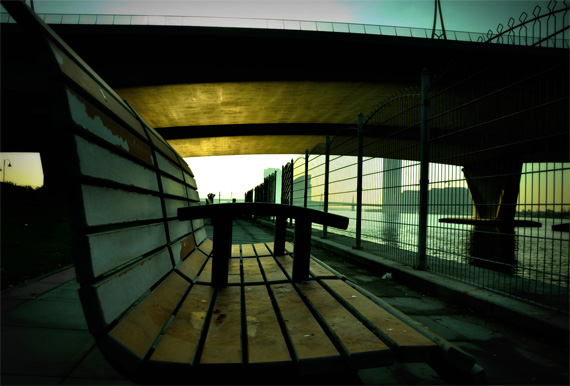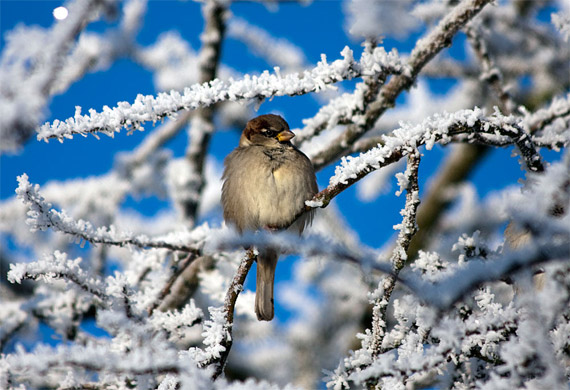Seemingly one of the trickiest aspects of photography to get your head around is the aperture of your camera’s lens. Be it a highly expensive pro lens or the zoom on your point and shoot (most point and shoots control aperture for you), the aperture of the lens will control aspects of your photography in the same way. Hopefully after reading this short guide you will have a basic understanding and be able to take it further in your photographic life.

“Divinity” captured by Amith Surendran
The Basics
You may have seen people talking about fast lenses or stopping down their lens, mentioning f/numbers or many other examples. (I’m not going to go through all the possibilities you may have seen.) But what do they all mean? Well, they are all talking about aperture.
You need to understand that photography in its base form is about capturing light—and light changes! Whether the light is natural or not, different scenes or areas will have different levels of light. In order to deal with these, we need to be able to control the input of this light, and one way of doing this is with the aperture on a lens. This controls the amount of light that is taken into your camera through the lens (among other things). The other way would likely be through shutter speed (a subject not covered in this post).
Right, clear enough? No? OK, well imagine for your photograph to work you need a certain amount of light hitting your camera sensor (or film if you still work in that medium). Look at it in terms of water in a jug (a strange analogy, I know, but bear with me). Say you need 100ml of water and it takes 1 second to get that water out of your tap. If you wanted more water (say 200ml) you could increase the length of time you had the tap on (2 seconds); this represents your shutter speed. Or, you could keep the length of time the tap was on that same but make the hole the water comes out of larger so a higher volume of water is dispensed; this represents your aperture.
I’m hoping that is clearer. The aperture is basically the hole in your lens through which light passes to hit your sensor/film.

“Bench” captured by Aris Lacson
The f-number represents the size of the hole. Strangely, a lower number means a larger hole (so f/1.8 is a much larger hole than f/22). I know this seems odd, but this is called wide open, having your lens set to the smallest f/number. Each increase in number decreases the amount of light coming into the camera by half (an example of aperture numbers: f/1.2, f/2, f/2.8, f/4, f/5.6, f/8… ). The smaller the number, the more light comes in through the hole and the “faster” the lens is. It’s worth noting that many lenses use one third f/stop increments (e.g., f/1, f/1.1, f/1.2, f/1.4, f/1.6, f/18, f/2), so the hole does not grow by one stop of light for each of these.
Fast Lens
A lens will be known as fast if it has a large aperture as its maximum (f/1.2, f/1.4, f/1.8, etc.). This is because the lower the number the larger the hole and the more light that can enter the camera lens. This means that shutter speeds can be much quicker.
Fast lenses are great for low light (music concerts, indoor events, etc.) or fast paced action (sports, wildlife, etc.). If you find yourself photographing subjects in these situations you will be glad to have a large aperture.
Depth of Field
The other aspect that is controlled by aperture is the amount of your subject that is in focus: depth of field. The larger the hole, the less of an area will be in focus and vice versa. Landscape photographers quite often work with large f-numbers (f/22+). This is because they get a greater depth of field (as in more of the image will be in focus). Other people like to have a solo subject really sharp while the background is blurry, so they will use a smaller f/number for a shallower depth of field (f/2.8, etc.).
Manipulating depth of field is a great way to play with you photographs. If you’re not familiar, try aperture priority mode. You set the aperture and your camera sets the shutter speed. Refer to your manual for details on using this setting. Some interesting images can be had with manually worked depth of field. But don’t just assume that shallow is best.

Photo captured by Anthony Smith
Stopping Down
Stopping down is a term used quite a lot in photography circles, so it is worth me explaining this term briefly as can be a confusing term. Stopping down means to decrease the size of the aperture by increasing the f/number.
To sum up (and just to confuse people more) a wide open lens will have a large aperture, with a small f-number and a shallow depth of field. Stopping down one or two stops will decrease the size of the aperture by increasing the f-number. All perfectly clear, I’m sure you will agree.
Final Point
I hope that has given you a clearer understanding of aperture. I’d love to hear from you if it has helped or if it is too complicated (I can ramble sometimes), so please get in contact.
Finally, if you only remember one thing from this entire article, remember this:
Small f-number (f/1.2) = Large aperture (hole) = Shallow depth of field and more light entering the camera (so shorter shutter speed)
Large f-number (f/22) = Small aperture (hole) = Deep depth of field and less light entering the camera (so longer shutter speed)
About the Author:
Also known as the fatphotographer (http://www.fatphotographer.net). Director and major contributor to the global photographic web resource.
Here is a helpful video on aperture from Jared Polin:
This tutorial will show you how changing the f-stop affects your final image.
Go to full article: How to Use Aperture
What are your thoughts on this article? Join the discussion on Facebook or Google+
Article from: PictureCorrect